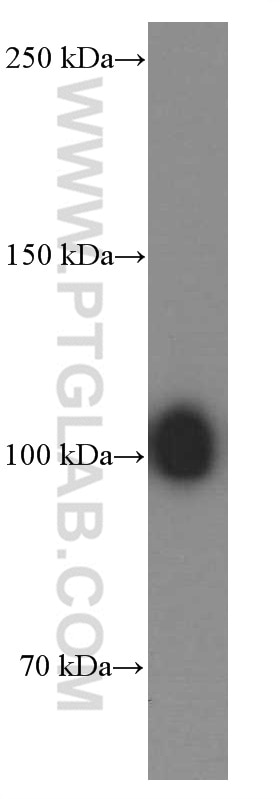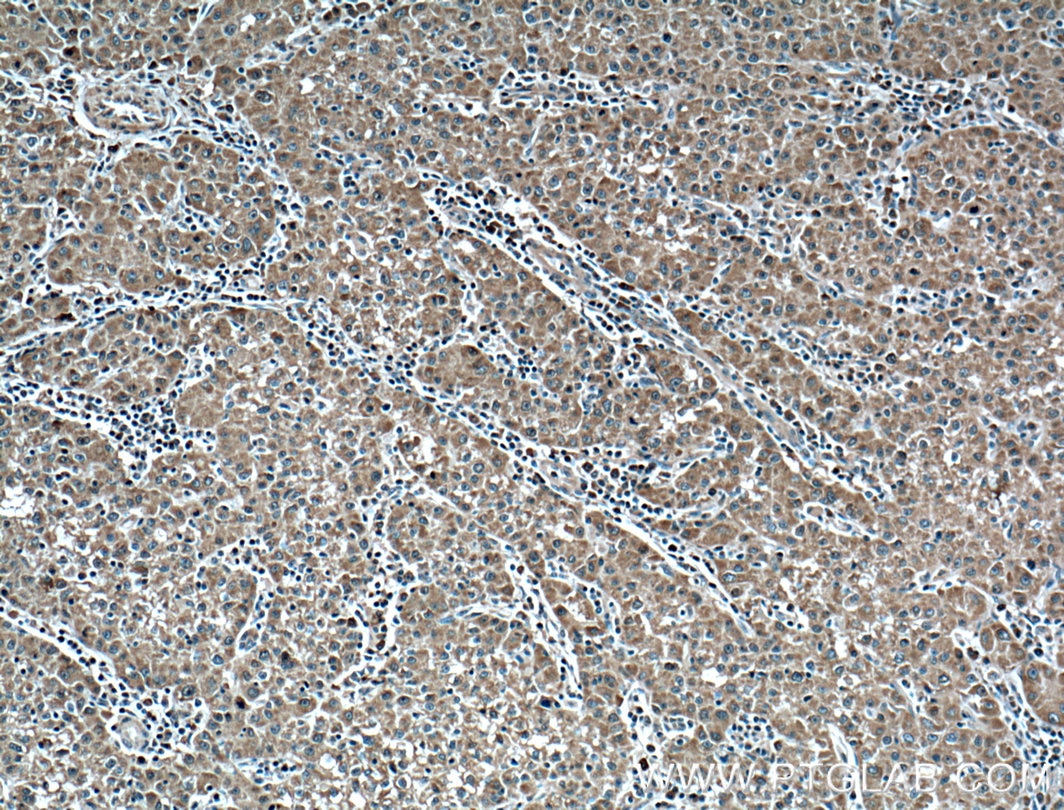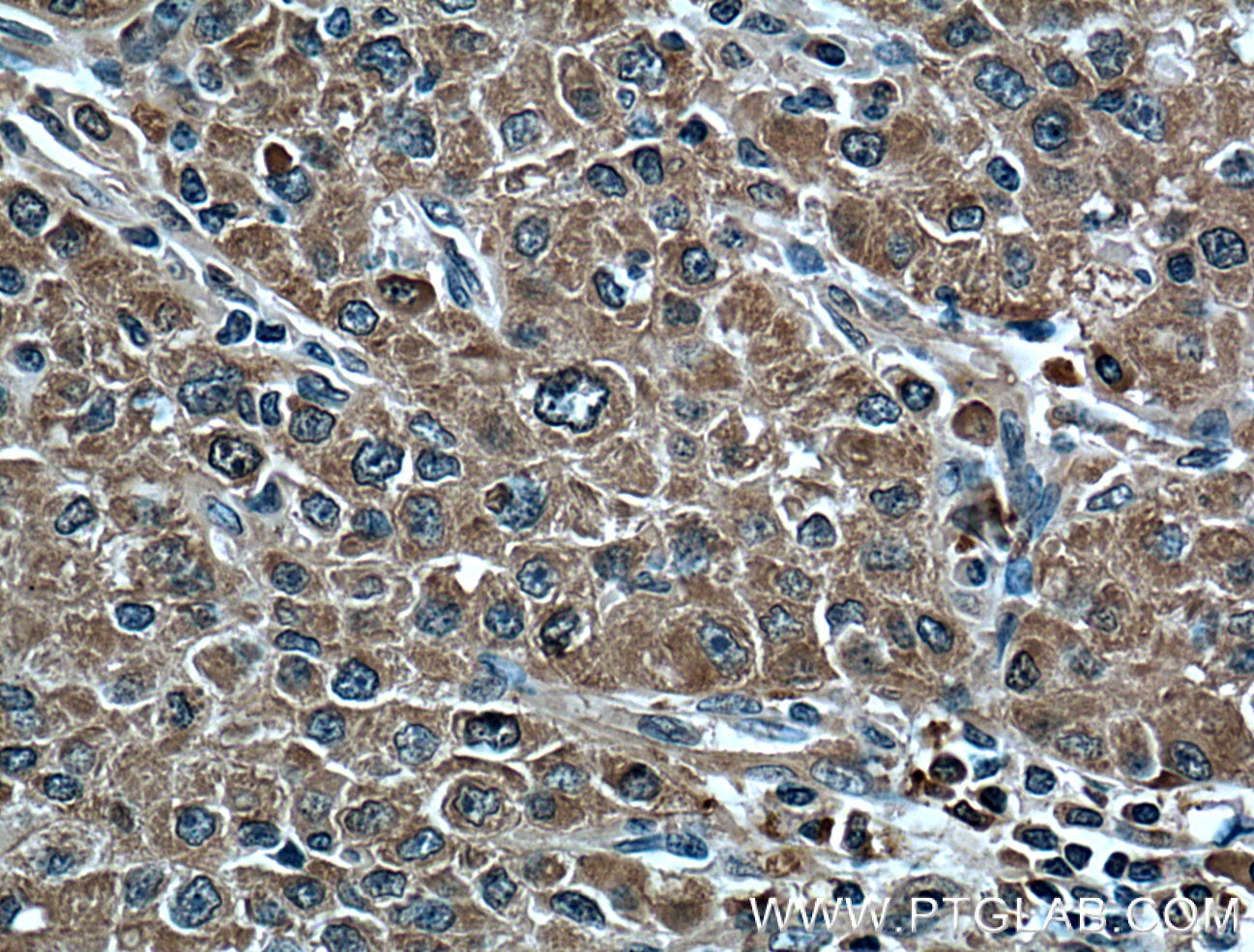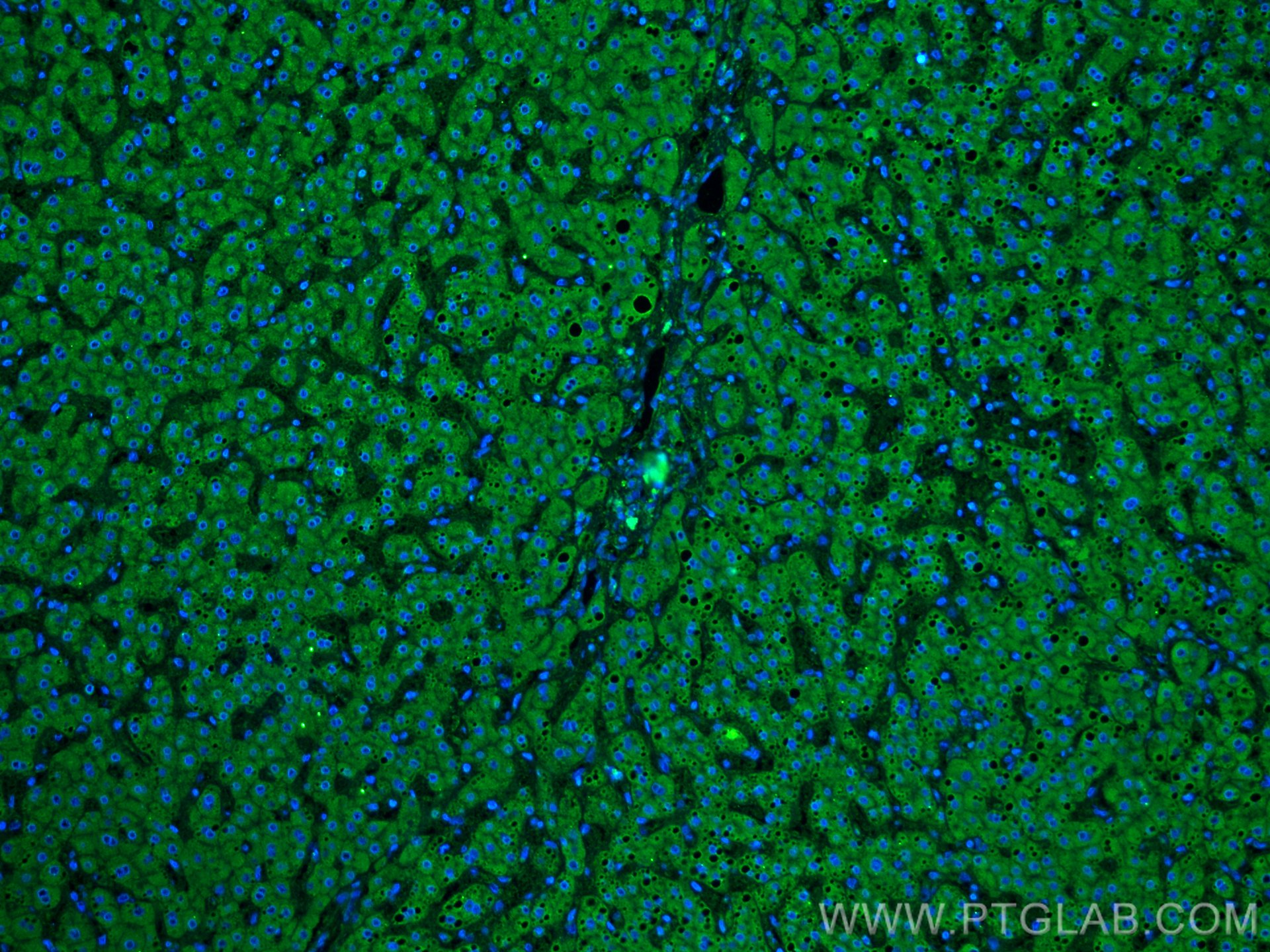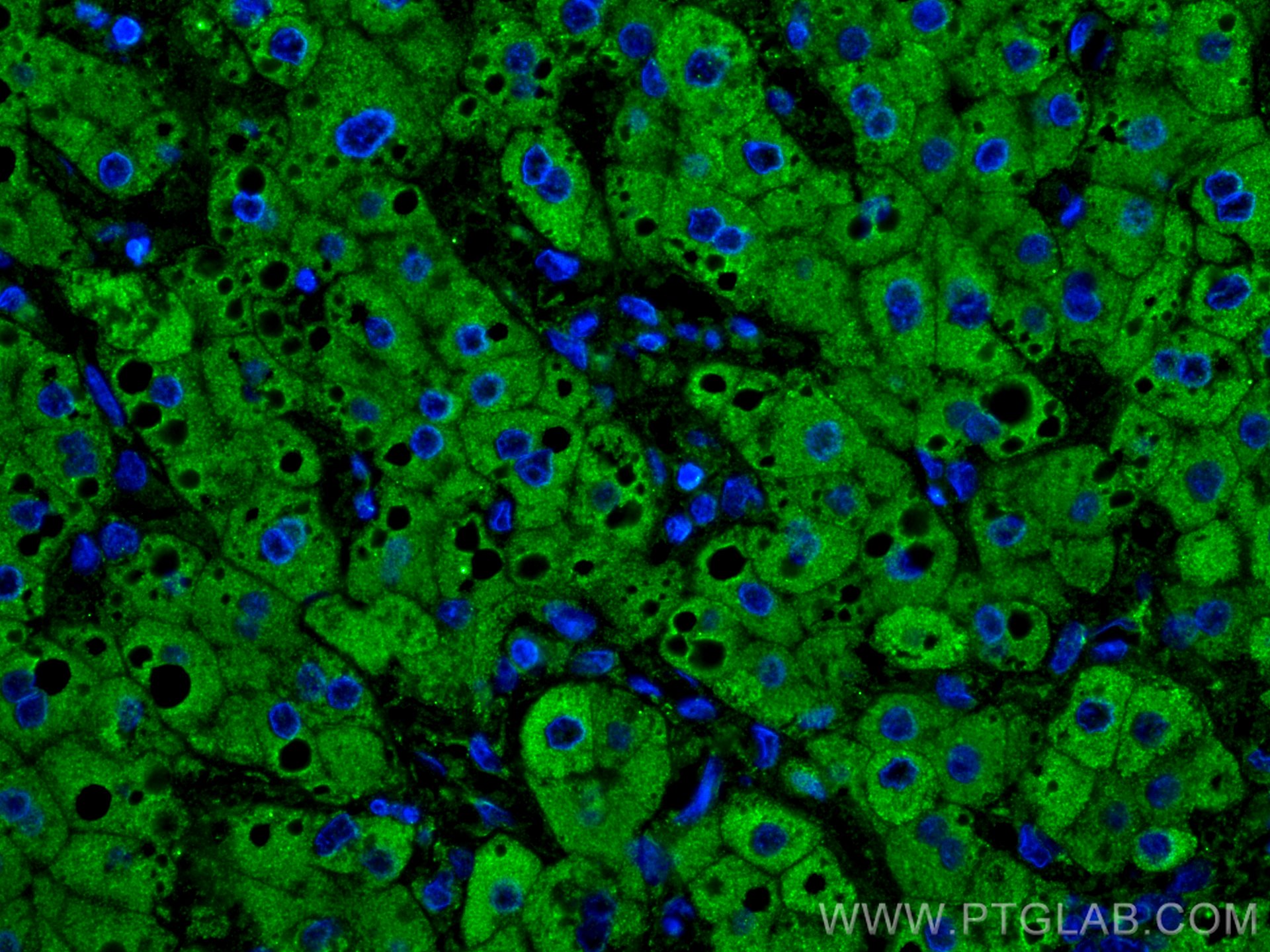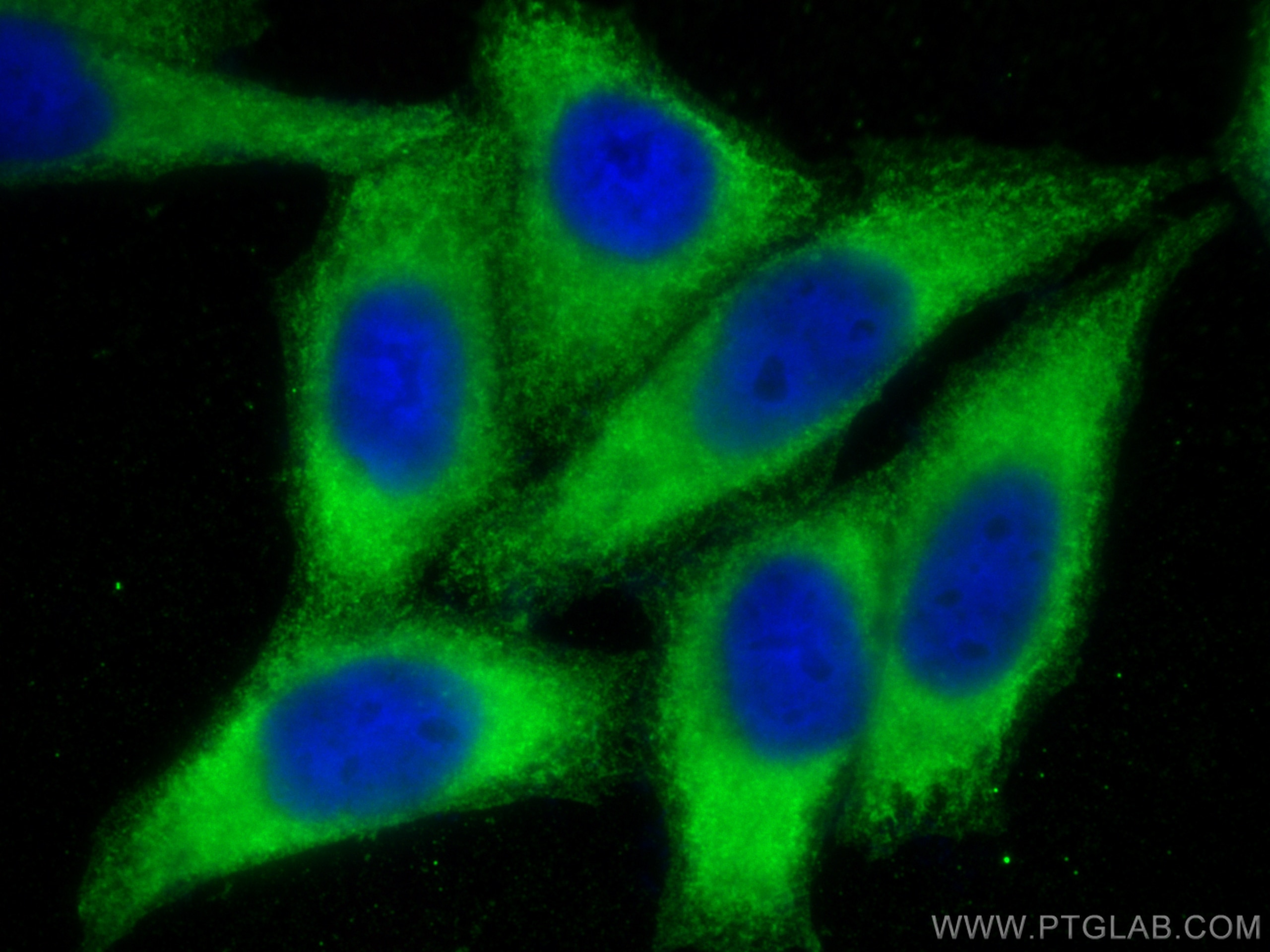Plasminogen Monoklonaler Antikörper
Plasminogen Monoklonal Antikörper für WB, IHC, IF/ICC, IF-P, ELISA
Wirt / Isotyp
Maus / IgG1
Getestete Reaktivität
human und mehr (1)
Anwendung
WB, IHC, IF/ICC, IF-P, ELISA
Konjugation
Unkonjugiert
CloneNo.
1F6A11
Kat-Nr. : 66399-1-Ig
Synonyme
Geprüfte Anwendungen
| Erfolgreiche Detektion in WB | humanes Plasmagewebe |
| Erfolgreiche Detektion in IHC | humanes Leberkarzinomgewebe Hinweis: Antigendemaskierung mit TE-Puffer pH 9,0 empfohlen. (*) Wahlweise kann die Antigendemaskierung auch mit Citratpuffer pH 6,0 erfolgen. |
| Erfolgreiche Detektion in IF-P | humanes Leberkarzinomgewebe |
| Erfolgreiche Detektion in IF/ICC | HepG2-Zellen |
Empfohlene Verdünnung
| Anwendung | Verdünnung |
|---|---|
| Western Blot (WB) | WB : 1:1000-1:4000 |
| Immunhistochemie (IHC) | IHC : 1:50-1:500 |
| Immunfluoreszenz (IF)-P | IF-P : 1:200-1:800 |
| Immunfluoreszenz (IF)/ICC | IF/ICC : 1:400-1:1600 |
| It is recommended that this reagent should be titrated in each testing system to obtain optimal results. | |
| Sample-dependent, check data in validation data gallery | |
Veröffentlichte Anwendungen
| WB | See 5 publications below |
| IHC | See 2 publications below |
Produktinformation
66399-1-Ig bindet in WB, IHC, IF/ICC, IF-P, ELISA Plasminogen und zeigt Reaktivität mit human
| Getestete Reaktivität | human |
| In Publikationen genannte Reaktivität | human, Maus |
| Wirt / Isotyp | Maus / IgG1 |
| Klonalität | Monoklonal |
| Typ | Antikörper |
| Immunogen | Plasminogen fusion protein Ag9938 |
| Vollständiger Name | plasminogen |
| Berechnetes Molekulargewicht | 810 aa, 91 kDa |
| Beobachtetes Molekulargewicht | 105 kDa |
| GenBank-Zugangsnummer | BC060513 |
| Gene symbol | Plasminogen |
| Gene ID (NCBI) | 5340 |
| Konjugation | Unkonjugiert |
| Form | Liquid |
| Reinigungsmethode | Protein-G-Reinigung |
| Lagerungspuffer | PBS with 0.02% sodium azide and 50% glycerol |
| Lagerungsbedingungen | Bei -20°C lagern. Nach dem Versand ein Jahr lang stabil Aliquotieren ist bei -20oC Lagerung nicht notwendig. 20ul Größen enthalten 0,1% BSA. |
Hintergrundinformationen
Plasminogen is a secreted blood zymogen that is activated by proteolysis and converted to plasmin and angiostatin. Plasminogen plays an important role in fibrinolysis as well as wound healing, cell migration, tissue modeling and angiogenesis. Plasminogen is synthesized in the liver, and it circulates in the blood, with a half-life of 2.2 days. Plasminogen is the precursor of plasmin, which lyses fibrin clots to fibrin degradation products (FDP) and D-dimer; the conversion to active protease is mediated by tissue-type (tPA) and urokinase-type (uPA) plasminogen activators. Defects in plasminogen are likely a cause of thrombophilia and ligneous conjunctivitis.
Protokolle
| PRODUKTSPEZIFISCHE PROTOKOLLE | |
|---|---|
| WB protocol for Plasminogen antibody 66399-1-Ig | Protokoll herunterladen |
| IHC protocol for Plasminogen antibody 66399-1-Ig | Protokoll herunterladenl |
| IF protocol for Plasminogen antibody 66399-1-Ig | Protokoll herunterladen |
| STANDARD-PROTOKOLLE | |
|---|---|
| Klicken Sie hier, um unsere Standardprotokolle anzuzeigen |
Publikationen
| Species | Application | Title |
|---|---|---|
Aging (Albany NY) NFAT5 directs hyperosmotic stress-induced fibrin deposition and macrophage infiltration via PAI-1 in endothelium. | ||
Front Cell Dev Biol Elevated Levels of miR-144-3p Induce Cholinergic Degeneration by Impairing the Maturation of NGF in Alzheimer's Disease. | ||
Biomed Pharmacother Proteomic and mechanistic study of Qingxuan Tongluo formula and curcumin in the treatment of Mycoplasma pneumoniae pneumonia. | ||
Clin Transl Oncol A prognostic gene signature for gastric cancer and the immune infiltration-associated mechanism underlying the signature gene, PLG | ||
Mol Cancer Single-cell multi-omics reveals that FABP1 + renal cell carcinoma drive tumor angiogenesis through the PLG-PLAT axis under fatty acid reprogramming |
